|
The AuSIM Multi-Voice Presence System (MVP) is a configuration
of one or more GoldServers
with an AuSIM CircuitManager.
MVP systems are easily configured to meet your requirements.
One example MVP system which AuSIM has deployed was for the Multi-Modal Watch Station (MMWS),
an advanced surface ship Command, Control, Communications, and Intelligence (C3I) console
developed for DD-X (21st century Navy destroyer class)
by the Navy's SPAWAR Systems Center in San Diego.
Some of the features of this system are given below.
-
Multi-Modal Watch Station (MMWS)
|
MMWS supported 5 command officers, 5 evaluators, 5 observers, a simulation supervisor, and 6 role-players.
Upon delivery in 2000, the system required 9 AuSIM3D servers and 6 AuSIM clients to provide this facility.
Today, all of this, without compromise (the MMWS role-players listened to simple stereo rather than full 3D audio)
can be delivered on only two AuSIM3D servers.
Each officer monitored 2 external nets (selectable from a virtual unlimited number)
as well as net-15 (intercom),
had a dedicated channel for point-to-point full-duplex conversations (where they could choose any endpoint in the system),
and had dedicated channels for message replay and alerts.
In a summary worst case, an officer could be presented with 7 simultaneous sound events.
|
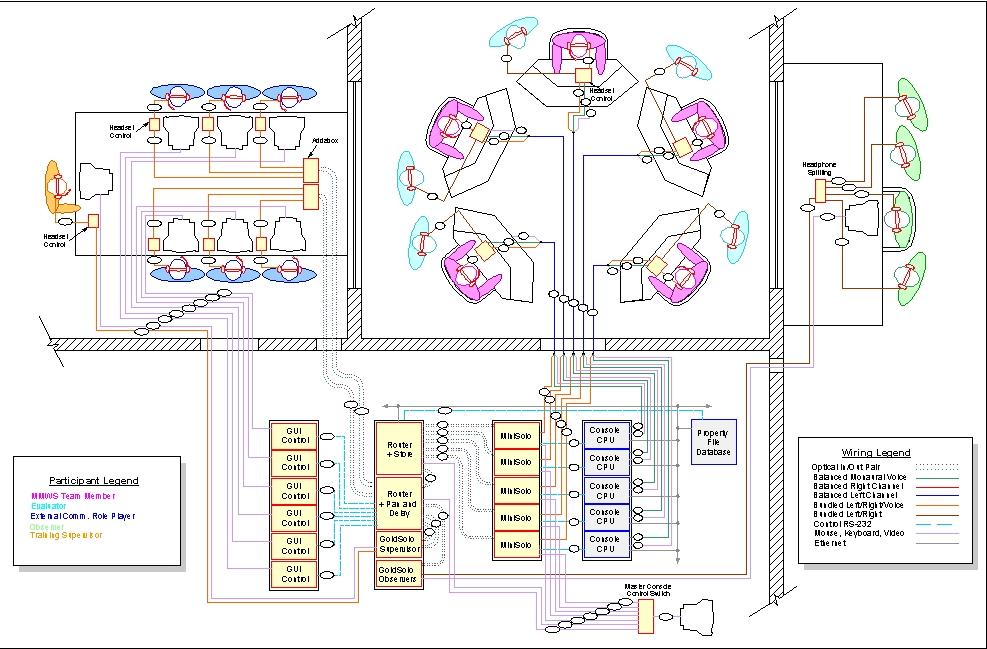
MMWS Schematic
|
The comms were organized as "nets" (virtual groups) and not as individual voices.
Thus the sound sources were positioned by task.
It may be argued that this grouping diminishes an advantage of 3D audio ... it is confusing when BravoWhiskey first talks on TF/TG CMD which comes from in-front, and then talks on Net-15 which comes from in-back.
The talker identification via location-consistency is lost.
The MMWS designers maintained that grouping by task (each net represents a task)
was more effective to the officer.
Additional features included:
- Push-To-Talk (PTT) - with virtual switches (onscreen buttons), physical hand-switches, and foot-switches were simultaneously supported.
- Circuit Flexibility - any net could be full- or half-duplex, where half-duplex=exclusive, or multi-plex.
- Net-In-Use indicator - the 24-bit audio was so clean that distinctive sounds were required to indicate the capture and release of a net by PTT.
- Property Files - every transmission was digitally recorded along with as many details as could be extracted:
- ID of the transmission originator
- net of transmission
- time/date stamp (universal time code) of capture and release of PTT
- the estimated length of actual voice on transmission
- an estimation of whether the transmission was cut-off
- a list of all subscribers to the net at the time of the transmission
- Text-To-Speech (TTS) - analog input and control supported.
The system did not incorporate TTS, but supported it through its soft PTT interface.
Text based messages could be received by a computer on the network.
That computer could request a PTT on a particular circuit to play the message.
Once it received an acknowledgement of a successful PTT request,
that computer could generate a speech message in real-time
which would be received through an analog input channel on the system.
- Word-spotting - was supported.
The system did not incorporate word-spotting, but supported and interfaced to such an external facility.
A high-quality copy of every transmission was saved to a hard-disk store.
A band-limited copy was sent to a word-spotting system on the network.
The word-spotter would extract as many keywords as it could find.
These key words were then appended to the property file associated with the message.
- Message Replay - was incorporated.
Any watchstander could query the property file database for keywords or any other property.
Upon finding a desired message, it could replay the message with shuttle control.
This replay was exclusive to that watchstander.
- Voice Recognition and Commands were supported.
The system did not incorporate voice recognition, but supported it peripherally.
All input signals to the AuSIM supplied headsets were split off as analog signals to a Via Voice speech recognition system.
The Via Voice system would then generate commands to the watchstation.
- Dynamic Watchstation Alerts - pre-recorded signals could be replayed from any 3D position to alert the watchstander of a high-attention issue.
Alerts are more effective with motion, and thus this system supported trajectories that drew the watchstander's attention to the requisite location.
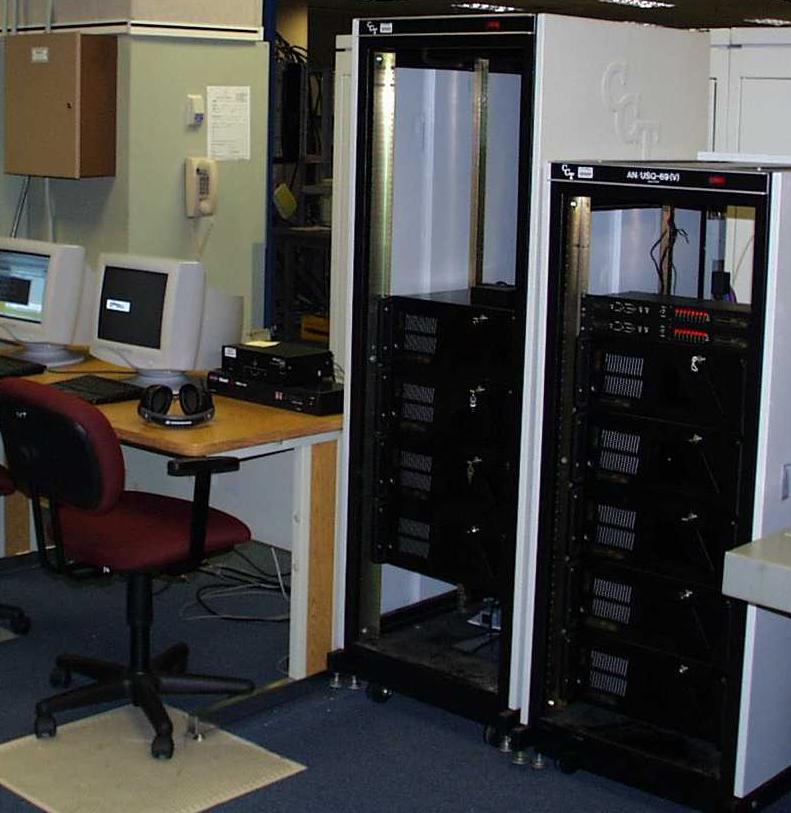
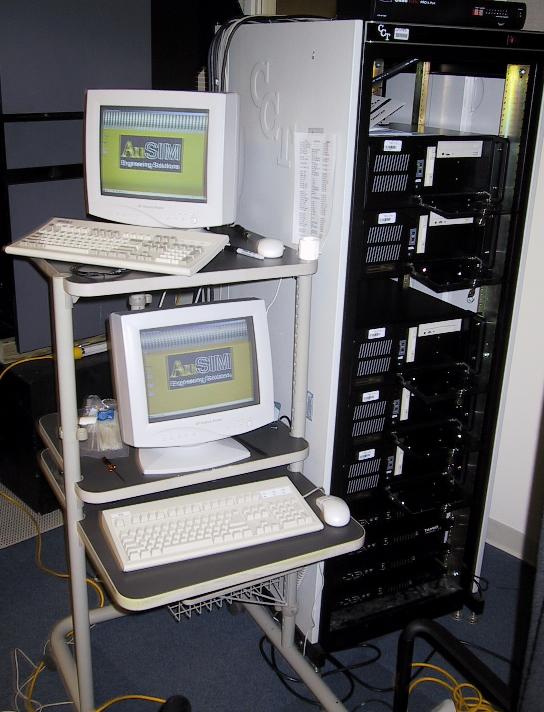
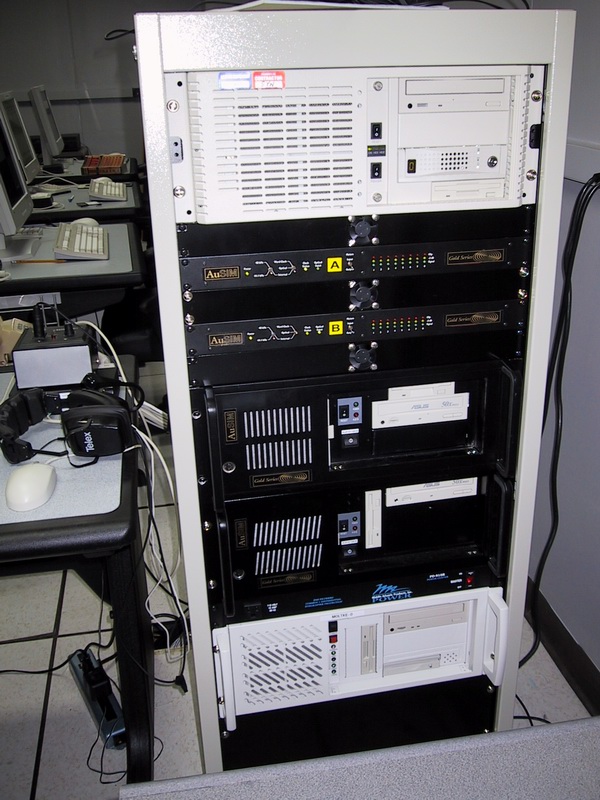
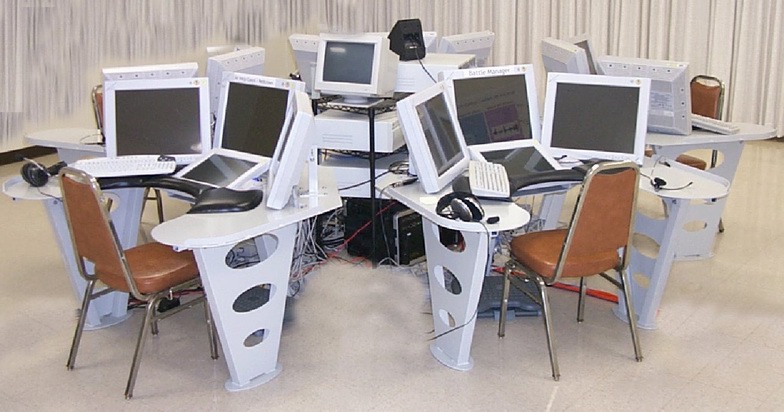

|

